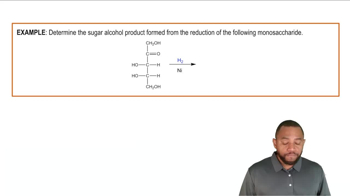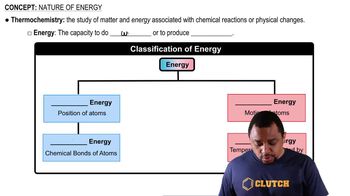How many chiral carbon atoms are present in each of the molecules shown in Problem 20.31?
Name four important monosaccharides and tell where each occurs in nature.
 Verified step by step guidance
Verified step by step guidance
Verified Solution
Key Concepts
Monosaccharides

Natural Sources of Monosaccharides

Biological Importance

How many chiral carbon atoms are present in each of the molecules shown in Problem 20.31?
Draw the open-chain structure of a 4-carbon deoxy sugar.
Only three stereoisomers are possible for 2,3-dibromo-2, 3-dichlorobutane. Draw them, indicating which pair are enantiomers (optical isomers). Why does the other isomer not have an enantiomer?
In Section 15.6, you saw that aldehydes react with reducing agents to yield primary alcohols (RCH=O → RCH₂OH). The structures of two d-aldotetroses are shown. One of them can be reduced to yield a chiral product, but the other yields an achiral product. Explain. <IMAGE><IMAGE>
Sucrose and d-glucose rotate plane-polarized light to the right; d-fructose rotates light to the left. When sucrose is hydrolyzed, the glucose–fructose mixture rotates light to the left.
b. Why do you think the mixture is called “invert sugar”?
